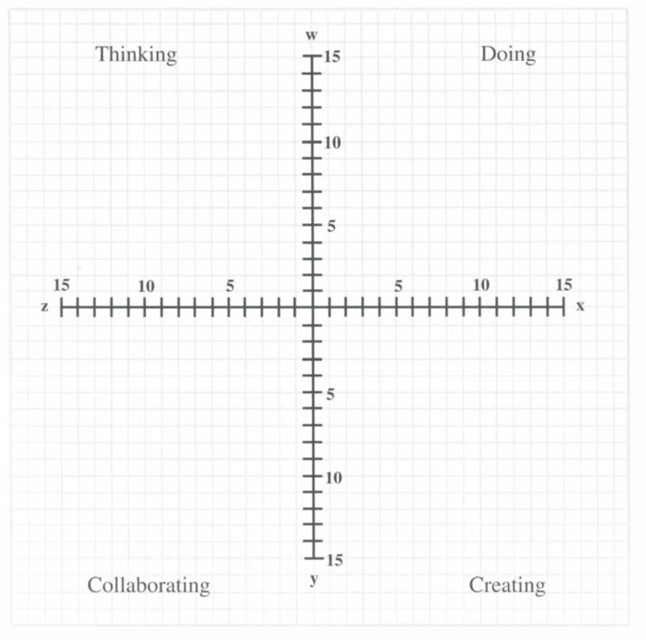Effective Communication Styles Inventory

Effective Communication Styles Inventory
Teaching is an act of communication between instructors and active learners. Effective communication depends on how the information is presented and organized, and how we present ourselves during the act of communication. Effective communication also depends upon whether the classroom climate is inclusive to enable the engagement of all learners.
Directions:
Print and complete this document to determine your communication style.
- Reflect on your personal characteristics as you read across each of the 15 lines below. On each line, circle two descriptive words that best describe you. This is a forced choice, so sometimes all four words will describe you, but you must select only two. Sometimes none of the four words “best” describes you; however, you must select two words on each line.
- After completing line 15, verify the number of words circled on each line (as you read across from left to right). There must only be two words circled on each line.
- For each column (x, z, w, and y), count the number of words circled and indicate the total circled in the box provided at the bottom.
- Your “total” scores for each column represent four “points” (w, x, y, z). Take these four points and graph them on the Scoring Grid. When plotting your points, remember: zero is in the middle of the graph no matter which direction you are plotting (left, right, up, or down).
- Draw a four-sided figure to connect the four points (in other words, when you connect your four points they must make a square or rectangle: that is, a four-sided figure). DO NOT DRAW A KITE. The largest area (length times width) of the four-sided figure drawn represents your dominant communication style as indicated by the words you selected. If you disagree about your style, go back and review the words you selected; OR reflect upon what you had assumed to be your style vs. how others perceive your style.
- Read the summary page for information about your style.
|
|
X |
Z |
W |
Y |
|
|
1. |
disputes the issue |
unruffled |
focused |
sociable |
|
|
2. |
will take a chance |
flexible |
rational |
sympathetic |
|
|
3. |
spur-of-the-moment |
prudent |
composed |
extroverted |
|
|
4. |
directs others |
asks |
pensive |
lively |
|
|
5. |
decisive |
ponders |
diligent |
gregarious |
|
|
6. |
takes control |
collaborates |
independent |
amicable |
|
|
7. |
self-assured |
noncommittal |
orderly |
demonstrative |
|
|
8. |
convincing |
open-minded |
thorough |
free-thinking |
|
|
9. |
will fight for |
will defend |
effective |
good-hearted |
|
|
10. |
wants to win |
hopeful |
pragmatic |
young-at-heart |
|
|
11. |
eager |
diplomatic |
systematic |
innovative |
|
|
12. |
confident |
accepting |
pains taking |
high-strung |
|
|
13. |
dominant |
mild |
plans |
talkative |
|
|
14. |
insistent |
sensible |
exact |
helpful |
|
|
15. |
urgent |
constant |
conventional |
good-natured |
|
|
|
|
|
|
|
= 30 |
Scoring Grid

Effective Communication Styles Inventory Summary

Enterprises (1998). Retrieved December 5, 2022 from http://whecare.com/images/form.pdf



